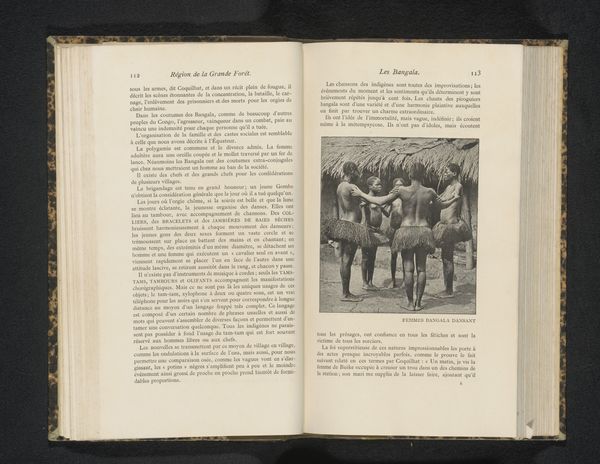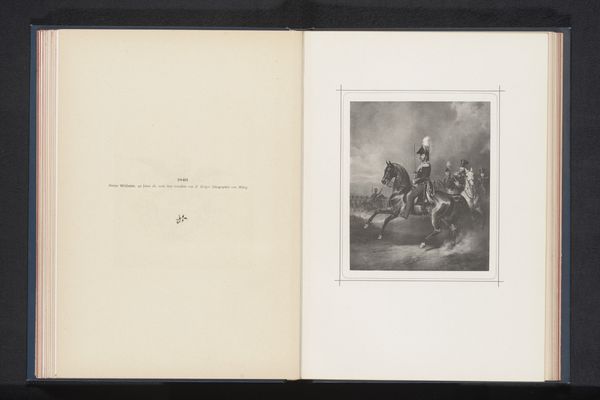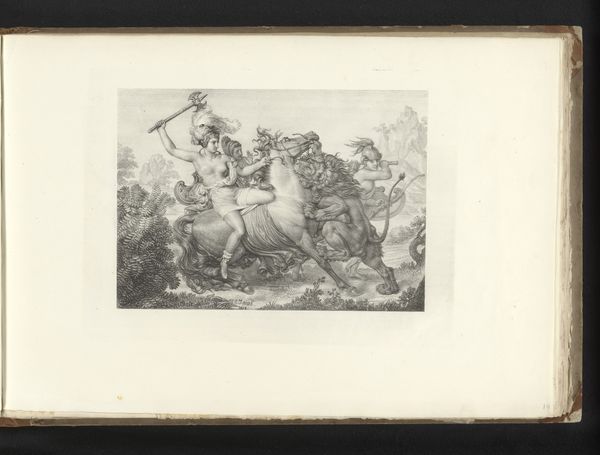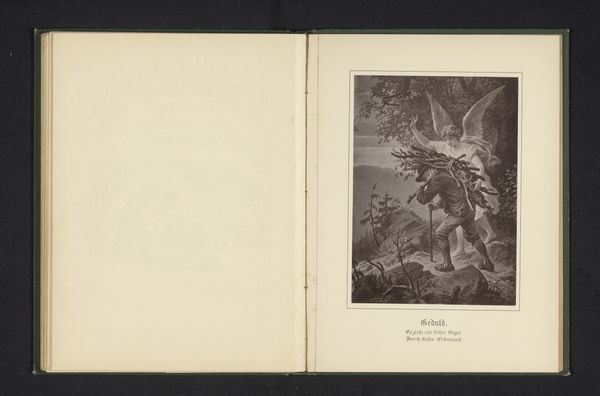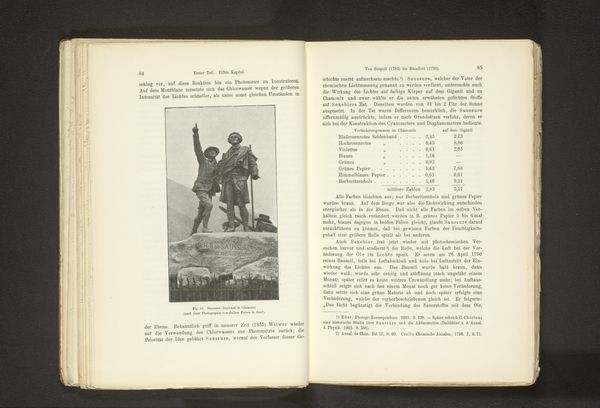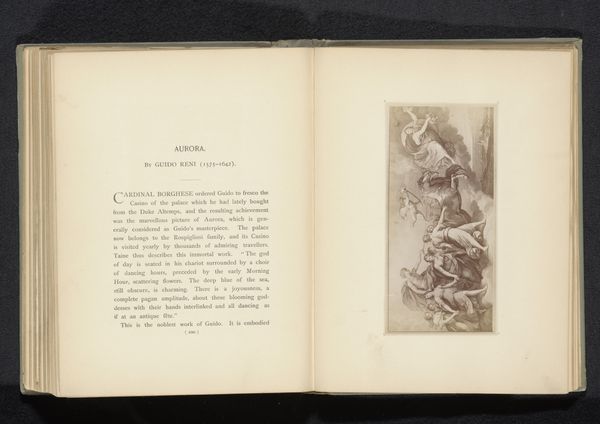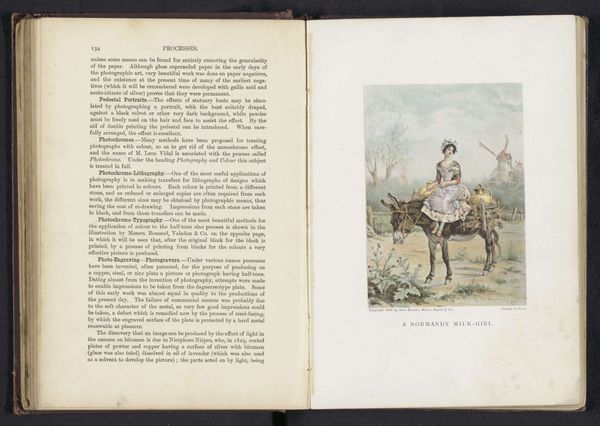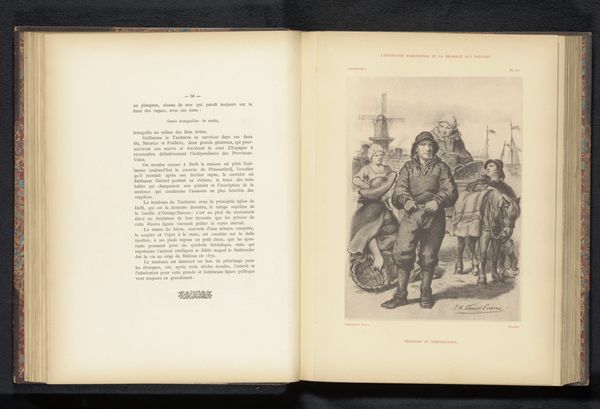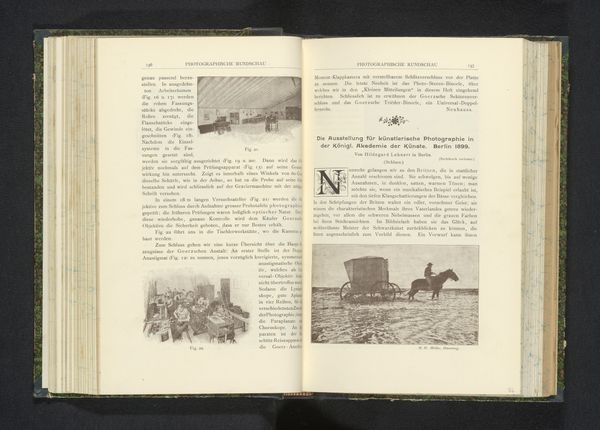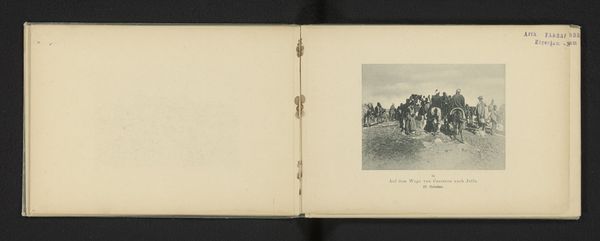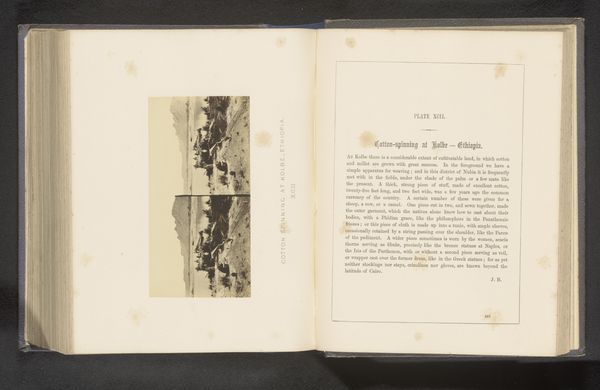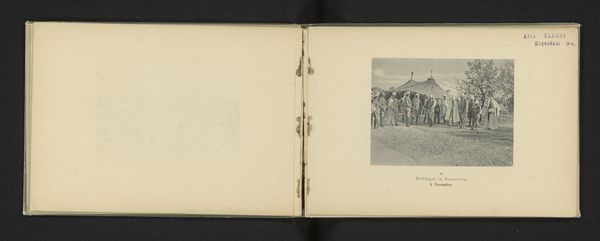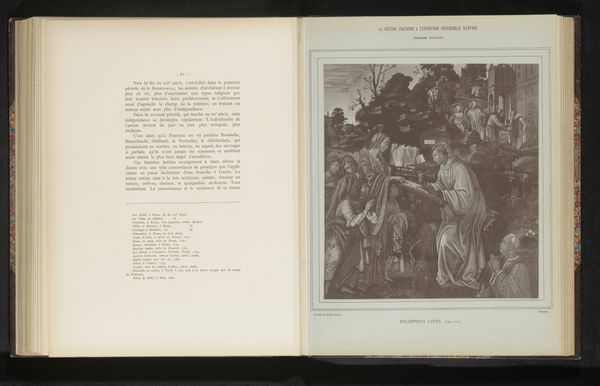
Dimensions: height 232 mm, width 158 mm
Copyright: Rijks Museum: Open Domain
Editor: Here we have a reproduction of a print of a wedding in Zeeland, dated before 1883, by Emile Aubry. It has a certain antiquated feel, perhaps evoked by the linear style of the engraving itself. What catches your eye, what do you see here? Curator: Immediately, I'm drawn to the symbolic weight of the wedding procession itself. Processions, particularly weddings, often embody community hopes and collective identity. Notice the faces. Editor: They’re not very detailed. Curator: Exactly! In this era, and presented in print form, that actually reinforces a sense of shared experience and identity, it could represent any wedding, anywhere. Think about how this imagery resonates with ideas of regional pride and cultural continuity. Do you see anything in the way they are travelling? Editor: Well, they're in a carriage. Is the floral arrangement that unusual stick the driver is carrying significant? Curator: It certainly is! It points to continuity. In folk tradition, flowers are symbols, fertility emblems, luck tokens and more. Here the artist depicts a bride and groom travelling away together in this formal style with the objects. They are building and sustaining shared meanings of togetherness. It's more than just transport, it's a symbolic departure and cultural performance, wouldn't you say? Editor: I see what you mean. Considering the era and the artistic style, it’s about an idea rather than just a depiction of an actual wedding. Curator: Precisely! The collective memory and cultural weight imbue the artwork with profound meaning, far beyond the individuals involved. We find new connections. Editor: This has really given me a new appreciation for how even seemingly simple images can be rich with cultural significance. Curator: And hopefully this has opened another window for us to understand that world!
Comments
No comments
Be the first to comment and join the conversation on the ultimate creative platform.
